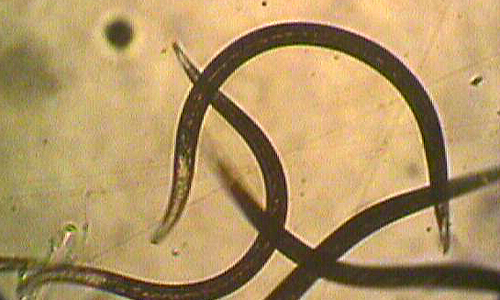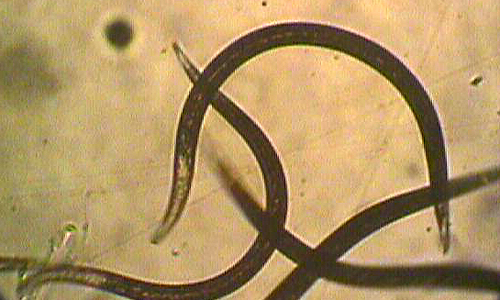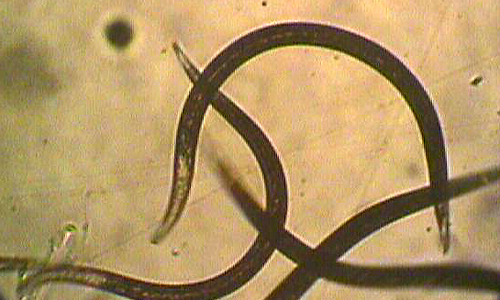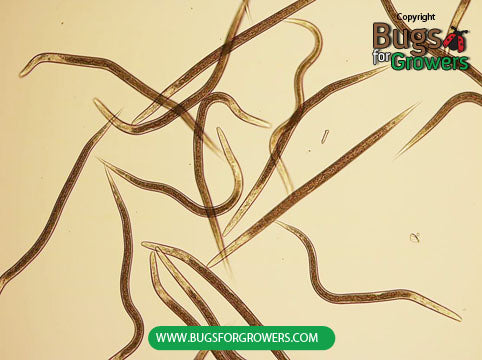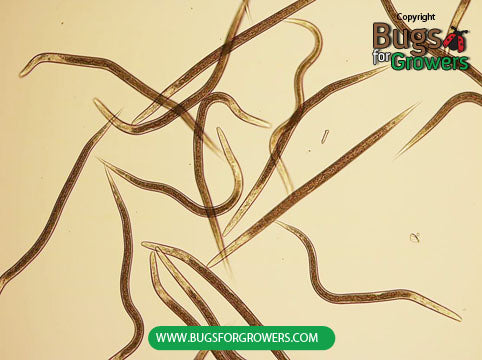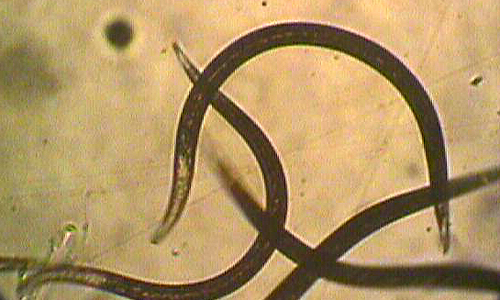Western corn rootworms/root borers
What are the western corn rootworms?
The western corn rootworms belong to an insect order Coleoptera. The western corn rootworms are scientifically called as Diabrotica virgifera virgifera and considered one of the most damaging insect pests of corn crop. The adults of the western corn rootworms are about 6.5 mm long and yellow colored with a black stripe on each of their front wings. Females of the western corn rootworms lay whitish oval shaped and about 0.1 mm long eggs in the soil. Newly hatched larvae this rootworm are white colored and about 3.0 mm long. Mature larvae are whitish in color with brown head capsule and a brown colored marking on the last abdominal segment. Matured larvae have three pairs of legs and they pupate in the soil. Pupae of the western corn rootworms are whitish in color.
Facts (show all)
- List of the most economically devastating species of the western corn rootworms
-
- the western corn rootworms, Diabrotica virgifera virgifera
- Biology of the western corn rootworms
-
The biology (life cycle) of this insect consists of four developmental stages including eggs, larvae (also called grubs), pupae and adults. The western corn rootworms overwinter as egg stage in the soil. Depending on temperature, these eggs hatch in late spring (May) in warmer areas whereas in early June in cooler areas. The newly hatched small larvae immediately start feeding on the smaller roots of young corn seedlings and develop through three larval stages that can feed on larger corn roots. The matured larvae then pupate in the soil. Adult beetles start emerging from pupae in late June through early July. Generally males emerge from pupae 5-7 days before females and then they mate. Mated females lay eggs in the soil starting from late July through mid August and life cycle continue. The western corn rootworms generally complete one generation per year.
- What type of damage is caused by the western corn rootworms?
-
Both larvae and adults of the western corn rootworms cause a serious damage to corn plants. Larvae exclusively feed on corn roots and cause plants to lodge whereas adults generally interfere corn pollination by feeding on silk and thus reducing grain production. The newly hatched larvae generally feed on smaller roots and root hairs whereas larger second and third stage larvae feed on larger roots. The larger larvae can tunnel the large roots and their heavy infestation can completely destroy the corn crop. Adults of the western corn rootworms also feed on corn leaves.
- Biological control of the western corn rootworms
-
Control of the western corn rootworms is essential because their larvae are known to feed voraciously on the corn roots and cause a tremendous damage to the corn crop. Chemical pesticides are effective in controlling the western corn rootworms but they can be detrimental to human and animal health, and the environment. Therefore, biological control agents such as beneficial entomopathogenic nematodes and fungi can serve as safe alternatives to chemical pesticides in controlling the western corn rootworms. Three commercially available beneficial entomopathogenic nematodes including Heterorhabditis bacteriophora, Steinernema carpcapsae and Steinernema feltiae nematodes, and an entomopathogenic fungus, Metarhizium anisopliae are proved to be effective biological control agents against the western corn rootworms. Beneficial entomopathogenic nematodes are generally applied at the rate of 1 billion nematodes/acre (23000 nematodes/sqft) for the effective control larvae of the western corn rootworms, Diabrotica virgifera virgifera in the fields. It has been demonstrated that the application of Heterorhabditis bacteriophora can reduce over 65% population of western corn rootworms in the field. In addition, Heterorhabditis bacteriophora nematodes applied at the time sowing of corn could persist in the field until they find and infect larvae of the western corn rootworms (Pilz et al., 2014).
- Parasitic beneficial entomopathogenic nematodes are effective against the western corn rootworms
-
- Heterorhabditis bacteriophora
- Steinernema carpcapsae
- Steinernema feltiae
- Beneficial entomopathogenic fungi are effective against the western corn rootworms
-
- Entomopathogenic fungus, Metarhizium anisopliae
- Research Papers
-
Jackson, J.J. 1995. Pathogenicity of entomopathogenic nematodes for third instars of the western corn rootworm. J Nematol 27:504.
Jackson, J.J. 1996. Field performance of entomopathogenic nematodes for suppression of western corn rootworm (Coleoptera: Chrysomelidae). J Econ Entomol 89:366–372.
Jackson, J.J. 1997. Field efficacy and ecology of three entomopathogenic nematodes with the western corn rootworm. J Nematol 29:586.
Jackson, J.J., Brooks, M.A. 1995. Parasitism of western corn rootworm larvae and pupae by Steinernema carpocapsae. J Nematol 27:15–20.
Journey, A.M., Ostlie, K.R. 2000. Biological control of the western corn rootworm (Coleoptera: Chrysomelidae) using the entomopathogenic nematode, Steinernema carpocapsae. Environ Entomol 29:822–831.
Kurtz, B., Toepfer, S., Ehlers, R.U., Kuhlmann, U. 2007. Establishment and persistence of Heterorhabditis bacteriophora, H. megidis, and Steinernema feltiae for controlling Diabrotica virgifera virgifera larvae in maize. J Appl Entomol 131:420–425.
Pilz, C. 2008. Biological control of the invasive maize pest Diabrotica virgifera virgifera by the entomopathogenic fungus Metarhizium anisopliae. PhD thesis at the University of Natural Resources and Applied Life Sciences BOKU, Vienna, 155 pp.
Pilz, C., Keller, S., Kuhlmann, U. and Toepfer, S. 2009. Comparative efficacy assessment of fungi, nematodes and insecticides to control western corn rootworm larvae in maize. Biocontrol. 54: 671-684.
Pilz, C., Toepfer, S., Knut, P., Strimitzer, T., Heimbach, U. and Grabenweger, G. 2014. Persistence of the entomoparasitic nematode Heterorhabditis bacteriophora in maize fields. Journal of Applied Entomology 138: 202-212.
Stefan, T., Ibolya, H.Z., Ehlers, R.U., Peters, A. and Kuhlmann, U. 2010. The effect of application techniques on field-scale efficacy: can the use of entomopathogenic nematodes reduce damage by western corn rootworm larvae? Agricultural and Forest Entomology. 12: 389-402.

